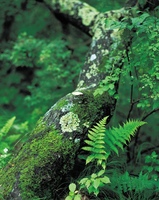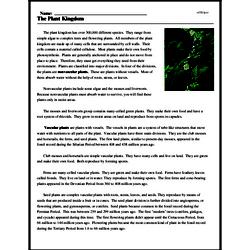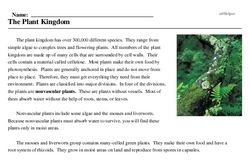The Plant Kingdom
The plant kingdom has over 300,000 different species. They range from simple algae to complex trees and flowering plants. All members of the plant kingdom are made up of many cells that are surrounded by cell walls. Their cells contain a material called cellulose. Most plants make their own food by photosynthesis. Plants are generally anchored in place and do not move from place to place. Therefore, they must get everything they need from their environment. Plants are classified into major divisions. In four of the divisions, the plants are nonvascular plants. These are plants without vessels. Most of them absorb water without the help of roots, stems, or leaves.
Nonvascular plants include some algae and the mosses and liverworts. Because nonvascular plants must absorb water to survive, you will find these plants only in moist areas.
The mosses and liverworts group contains many-celled green plants. They make their own food and have a root system of rhizoids. They grow in moist areas on land and reproduce from spores in capsules.




